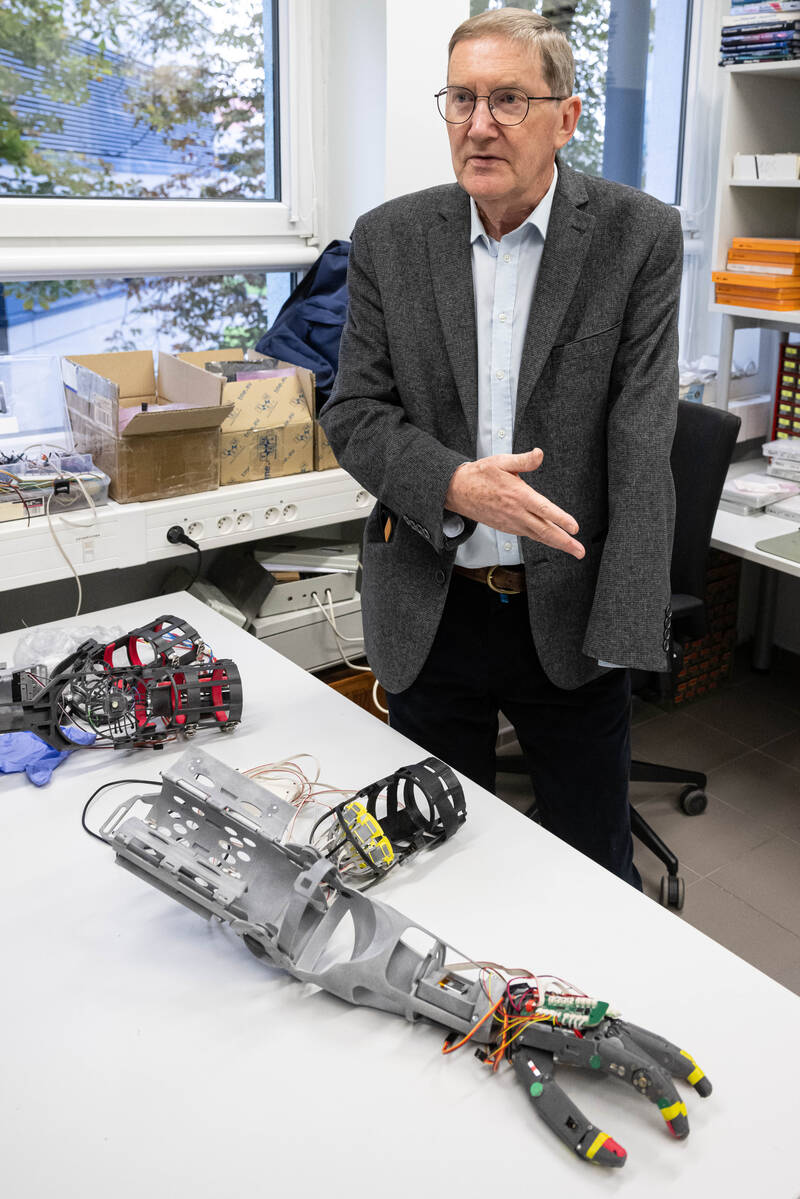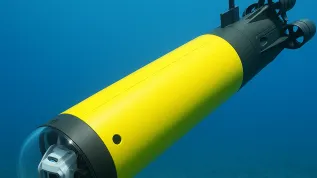
Scientists from the Wrocław University of Science and Technology are completing work on a prototype bionic hand prosthesis for people with forearm amputations. The device is controlled with signals sent by muscles on the stump of the amputated limb, and artificial intelligence is used to analyse them.
The bionic prosthesis was built by a team led by Dr. Andrzej Wołczowski from the Faculty of Electronics, Photonics and Microsystems at the Wrocław University of Science and Technology. The project called 'A dexterous, bionic hand prosthesis', for which a grant from the National Centre for Research and Development has been obtained, is being implemented at the university’s Centre for Innovation and Business.
The technologically advanced prosthesis is designed for people who have had their forearm amputated. 'In such amputations, some muscles usually remain, which we can use to directly control the prosthesis', Dr. Wołczowski told PAP.
The prosthesis consists of three parts. The most technologically advanced of them is the hand. The other parts are the forearm and the shoulder sections. 'We also used a powered elbow orthosis, because lifting a large weight on the stump of the arm is troublesome', says Wołczowski, who has had his arm amputated above the elbow.
The prosthesis is bionic, which means that it is moved by impulses from the muscles of the stump of the amputated limb. 'Signals from the human body are used to teach the program that recognizes these signals. The device is able to learn the signals and translate them into movement', the scientist explains.

Sensors installed in the fingertips of the artificial hand determine the force of pressure and feel the contact with the object being touched. 'This allows the prosthesis to adjust the grip to the object in the final phase. For example, the user gives the order to grab a ball, but the ball may be larger or smaller, and these artificial fingers sense this', says Dr. Wołczowski. Scientists also want to install vibration devices in the prosthesis, thanks to which the user will feel the object being touched.
Dr. Paweł Trajdos from the Faculty of Information and Communication Technology, who, together with Dr. Michał Błędowski, is responsible for designing and implementing the decision-making module for the prosthesis, adds that the device can learn and improve its movements. 'Every person is different and this also applies to signals generated by the body. In people with amputation, these differences are even greater, depending on the degree of amputation - and how the muscles on the stump are arranged after the procedure', says Dr. Trajdos.
He adds that the user of the prosthesis, through signals sent from the muscles, 'gives' the device information about movement patterns. 'This is training material for the system, and the more data we have from signals sent by the body, the better the quality of movement recognition will be. So the user has to practice with the prosthesis to teach it certain movements', the engineer says. He adds that there is also 'feedback and the classifier placed in the prosthesis teaches the user to generate their muscle contraction patterns differently'.
The project is scheduled to be completed in 2025. Three personalized prostheses will be developed. Scientists are looking for people with amputated upper limbs to participate in prototype testing. The three selected people will receive the prostheses for themselves.

The members of the team led by Dr. Andrzej Wołczowski are: Professor Marek Kurzyński, Dr. Michał Błędowski, Dr. Janusz Jakubiak, Dr. Jerzy Witkowski, Dr. Andrzej Grobelny - researchers from the Faculty of Electronics, Photonics and Microsystems of the Wrocław University of Science and Technology, and Dr. Paweł Trajdos from the Faculty of Information and Communication Technology of the Wrocław University of Technology, Dr. Marcin Pawlak from the Faculty of Electrical Engineering and Dr. Mariusz Opałka from the Faculty of Mechanical Engineering. (PAP)
PAP - Science in Poland, Piotr Doczekalski
pdo/ agt/ jpn/ kap/
tr. RL













